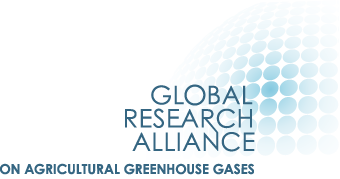Overview of India’s current Tier 2 approach
India’s livestock sector is one of the largest in the world, with more than half of the world’s buffalo, more than 10% of all cattle and more than 20% of small ruminants. Livestock has multiple functions in rural livelihoods, and with increasing income and urbanization, demand for animal products is gradually increasing. India’s first and second national communications reported that in 1994 and 2000, enteric fermentation and manure management emissions totaled just over 200,000 GgCO2 (accounting for about 60% of total agricultural emissions).
India has used a country-specific Tier 2 approach for cattle and small ruminant enteric fermentation emissions since submitting its first national communication in 2004, although the specific method used has changed over time, as described in the second national communication (2012). Methane emissions from manure management are not a key category in the inventory and are estimated using a Tier 1 approach, although applications of the Tier 2 approach have been reported in sources used in the national inventory.
Table 1: Overview of Tiers used for livestock methane emissions in India’s national GHG inventories
| Livestock types | Tier used for enteric fermentation (CH4) | Year adopted* | Tier used for manure management (CH4) | Year adopted* |
|---|---|---|---|---|
| Dairy cattle | T2 | 2004 | T1 | - |
| Non-dairy cattle | T2 | 2004 | T1 | - |
| Dairy buffalo | T2 | 2004 | T1 | - |
| Non-dairy buffalo | T2 | 2004 | T1 | - |
| Sheep | T2 | 2012 | T1 | - |
| Goats | T2 | 2012 | T1 | - |
| Other livestock | T1 | - | T1 | - |
*Year refers to the year of NC submission
Enteric fermentation
How India’s approach has developed over time:
(1) First national communication
In its first national communication, submitted in 1994, India reported emission factors for cattle and buffalo based on the weighted average of emission factors derived through different methods. Cattle and buffalo were divided by breed type, use and age (Table 2). Emission factors were estimated using the IPCC method, by collating published methane emission estimates and by a number of direct measurements using the face mask technique carried out as part of the enabling activities in preparation for the compilation of the national communication. Livestock population data derived from the livestock census.
Table 2: Emission factors for different livestock types reported in India’s first national communication
| Category | Emission factor (kgCH4/head/year) |
|---|---|
| Dairy cattle | |
| Indigenous | 28±5 |
| Cross-bred | 43±5 |
| Non-dairy cattle (indigenous) | |
| 0-1 year | 9±3 |
| 1-3 year | 23±8 |
| Adult | 32±6 |
| Non-dairy cattle (cross-bred) | |
| 0-1 year | 11±3 |
| 1-2.5 year | 26±5 |
| Adult | 33±4 |
| Dairy buffalo | 50±17 |
| Non-dairy buffalo | |
| 0-1 year | 8±3 |
| 1-3 year | 22±6 |
| Adult | 44±11 |
(2) Second national communication
The methodology used in the second national communication is described in a scientific journal publication by Swamy and Bhattacharya (2006). The estimation of gross energy intake is based on dry matter feed intake as stipulated in the Indian Feeding Standards. After defining sub-categories of cattle and buffalo, the annual average live weight for each sub-category was estimated based on national scientific publications. Gross energy intake was estimated as:
GE (MJ) = (TDNc X 4.4 X 4.184 X 365)/(DE/100)
where TDN is total digestible nutrients from the Indian feeding tables. For breeding animals, this included TDN required for maintenance, lactation and pregnancy, while for other animals it includes TDN for maintenance and work.
The researchers who developed this method suggested that a methodology based on Indian feeding standards was more appropriate for estimating gross energy intake than the IPCC method. The Indian feeding standards have been widely accepted within India. They recommend feed rations on the basis of TDN and ME values, and compared to the NRC method are more strongly supported by studies on the nutrition of tropical animals.
Having estimated GE intake for each category of animal, a methane conversion factor was applied to GE intake for each category. The methane conversion factors used were based on IPCC default values but adjusted for younger animal groups based on national research.
In the national inventory, this approach is applied to livestock data at the state level. National level implied emission factors are then the weighted average of emission factors across the country.
Further Resources
India 2004. First national communication.
India 2012. Second national communication.
Swamy M. 2016. AFOLU Emissions. Version 1.0 dated July 15, 2016, from GHG platform India: GHG platform India-2007-2012 National Estimates 2016 Series.
Swamy M, Bhattacharya S. 2006. Budgeting anthropogenic greenhouse gas emission from Indian livestock using country-specific emission coefficients. Current Science.
Author: Andreas Wilkes, Values for development Ltd (2019)

